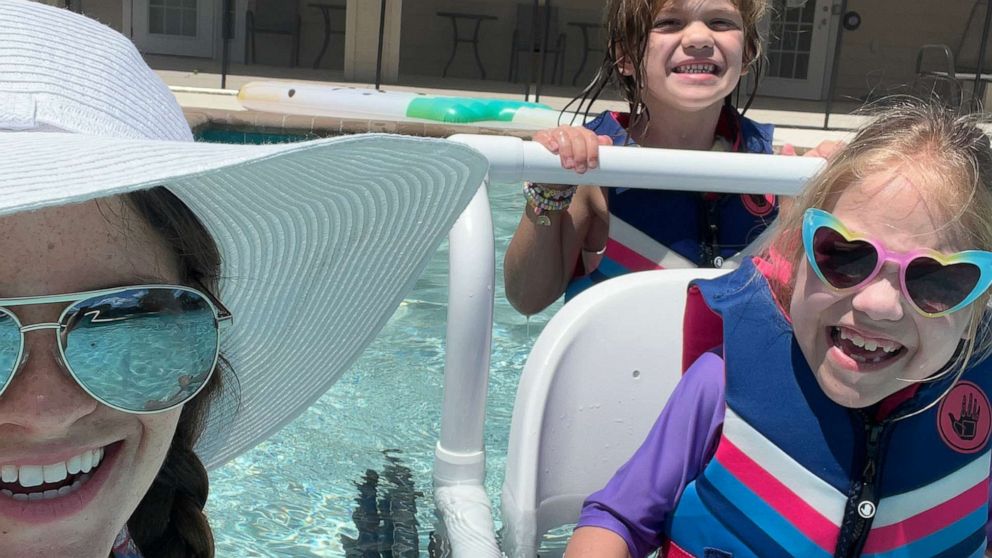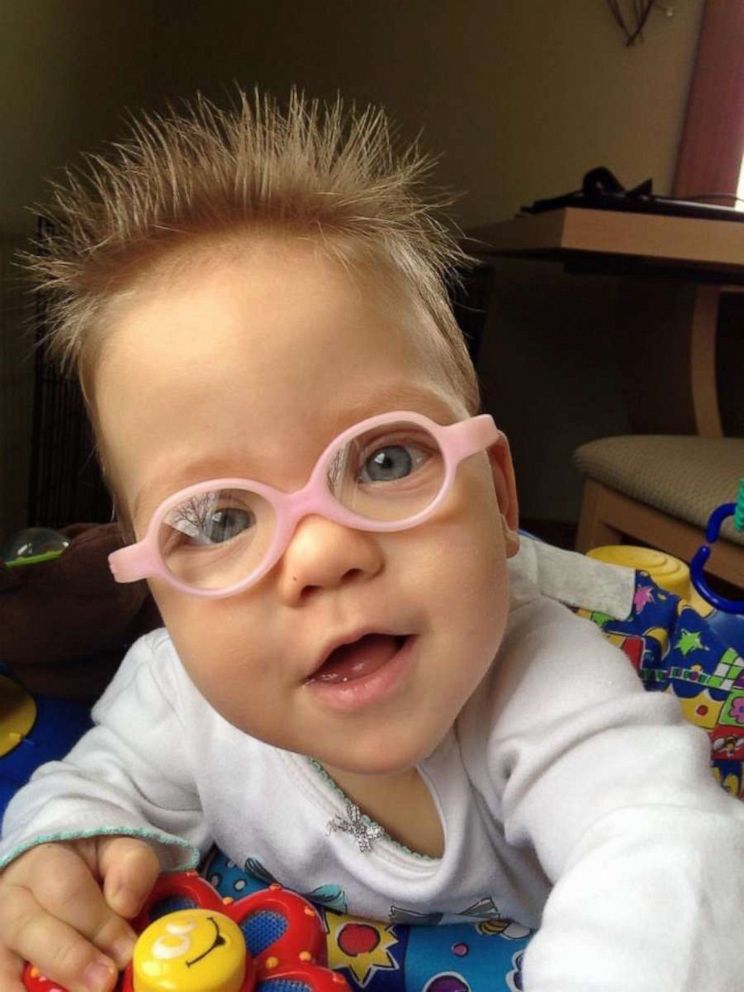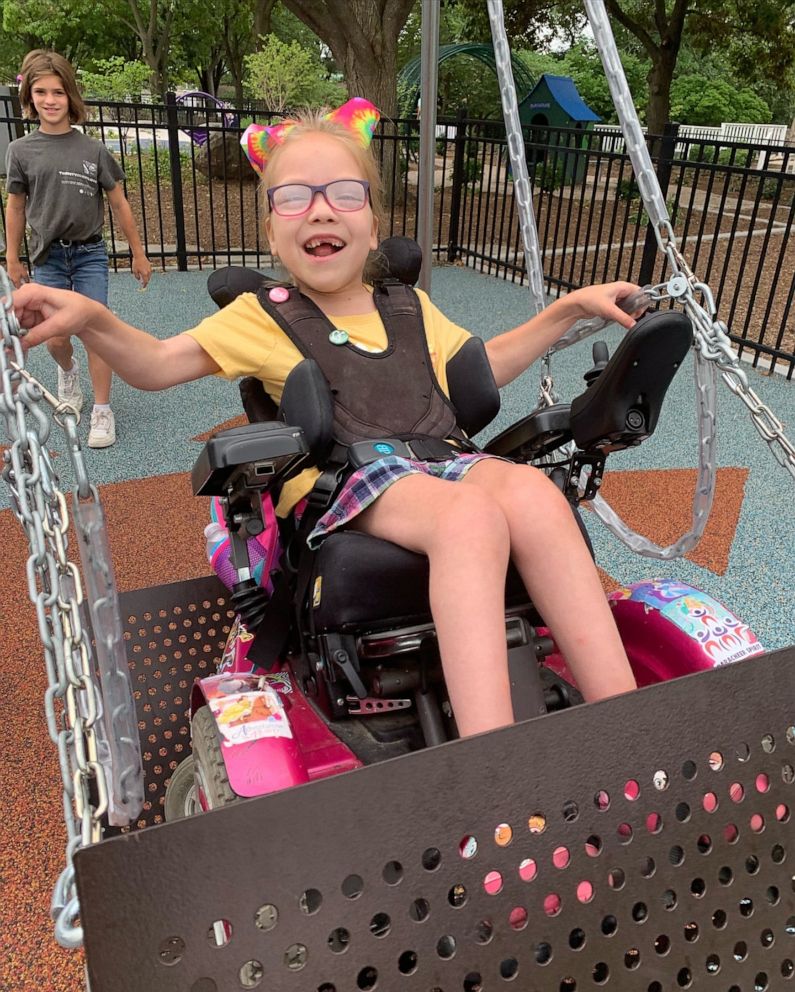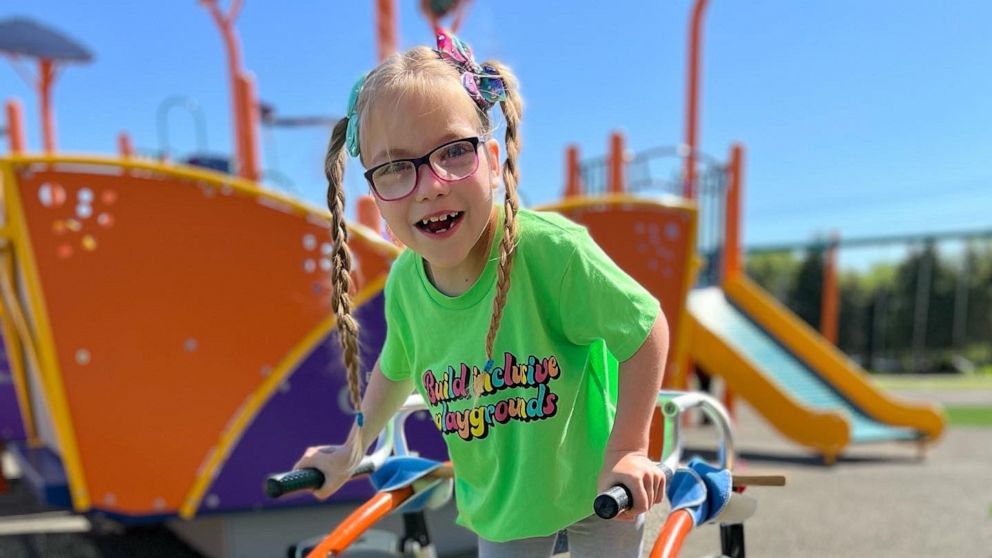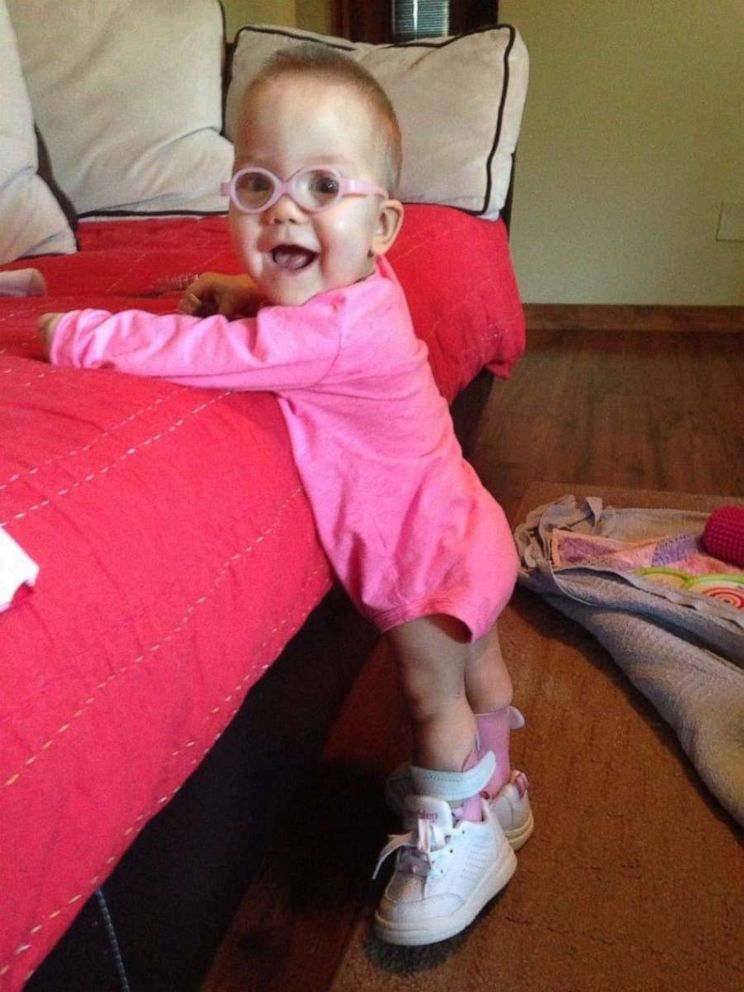An Illinois mother is raising awareness of inclusive design by sharing a video of her daughter enjoying a wheelchair-accessible swimming pool.
Katrina Placzek posted a vlog on YouTube earlier this month of her daughter Dallas using a special pool-friendly wheelchair at Tiff’s Place, a wheelchair-accessible vacation home in Chuluota, Florida, about 22 miles east of Orlando.
In a related Instagram video post, she asked, “Have you ever seen an aquatic wheelchair at an accessible pool?”
“They do not float & can be totally submerged,” Placzek continued in captions overlaid on the video. “They have locking wheels and an anti-tip design. There is also a seatbelt for safety. Love this accessibility!”
Placzek told “Good Morning America” she and her family were impressed by how inclusive the unique wheelchair’s design was, noting that traditional wheelchairs feature parts that can rust easily when exposed to water.
“We’d never seen a wheelchair like that before. It was made out of PVC,” Placzek recalled. “We sat Dallas in there and it just had a ramp and then you go around the ramp area and then it gets deep but there’s a speed bump sort of thing at the bottom so you know not to go where it drops. So if you’re a wheelchair user, you don’t go and drop at the bottom.”
“It was really cool to see the entire house [at Tiff’s Place] was designed with wheelchair users in mind,” the mom of four added.
Dallas, now 8, was born premature at 28 weeks and has quadriplegic spastic cerebral palsy, which affects her arms and legs and makes it hard for her to walk, according to her mom. The condition requires Dallas to navigate the world in a different way — something Placzek hopes to shine a light on through social media.
Placzek said she started sharing Dallas’ story and life on her “Discover With Dallas” Instagram and YouTube pages after one pivotal experience with a wheelchair swing at their local park. Before the experience, the family had stopped visiting parks with Dallas because there weren’t any accessible features for her to enjoy, but seeing and using the wheelchair swing changed everything.
“I never thought of it, like how important this is, and to see how inclusion makes someone feel in front of your eyes. It was like, ‘I think I need to show the world what this means for kids like her,’ ” Placzek recounted. “You don’t really think about it until you’re in a wheelchair because we don’t live in that world and when you have a kid that can’t go to a lot of places, you just stop going.”
Through “Discover With Dallas,” Placzek strives to center Dallas’ journey and her work as an actress and model too, instead of her own as a parent of a child with cerebral palsy.
“The important thing about her social media account that I make sure is that it’s in representation of the disability community, and not necessarily in representation of my story,” Placzek said. “I think that’s hard to find in children with social media, disabled children[‘s] pages because there’s a lot of them. But a lot of it doesn’t have the representation of the child, but the representation of raising the child.”
Placzek’s wheelchair-accessible swimming pool posts have since taken off and comments have been positive, she said. She hopes the momentum continues and that more places and products can be designed with inclusivity and accessibility in mind.
“The most important thing is just for people to think about disabled children and think about disabled adults when they’re making a business, or they’re designing a playground, or if the school is building a new, updated playground,” Placzek said.

